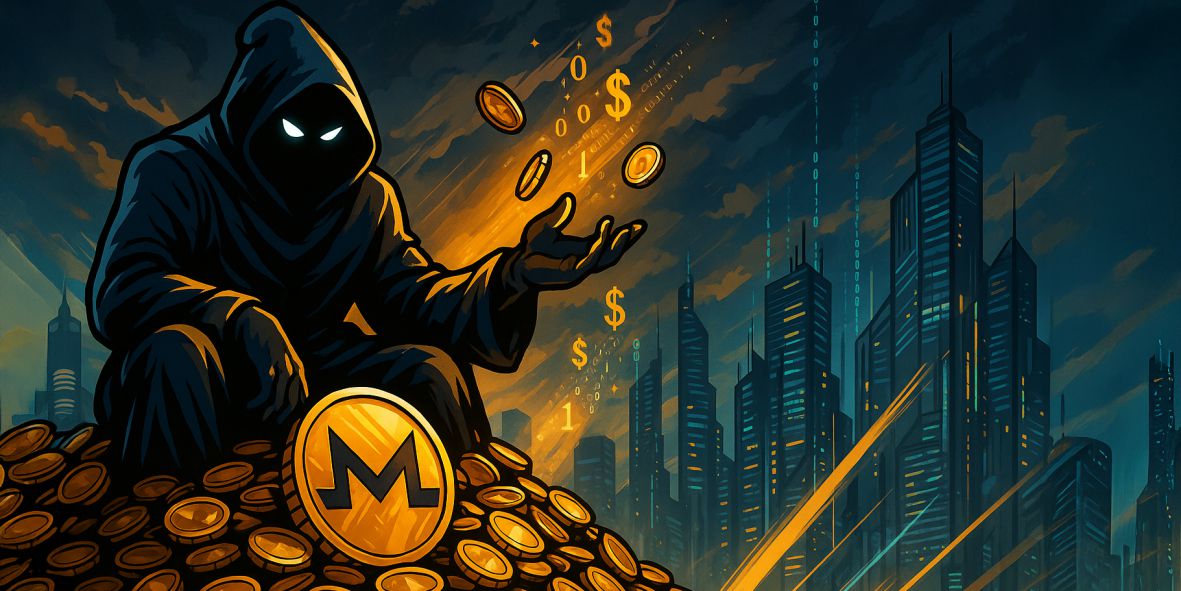Key Takeaways:
- $330M Bitcoin Heist: Hackers converted stolen Bitcoin (BTC) into Monero (XMR), exploiting its privacy features to obscure trails.
- Supply Shock: Massive XMR buy-up triggered 41% price surge to $388, highest since 2021, before partial pullback.
- Regulatory Crosshairs: Incident fuels debates over privacy coins’ role in illicit finance amid tightening EU Markets in Crypto-Assets Regulation (MiCA) rules.
The Heist That Supercharged Monero
In a plot ripped from a cyberthriller, hackers stole 3,520 Bitcoin (BTC) worth $330M on April 28, then executed a crypto vanishing act: swapping it all for Monero (XMR). The move, flagged by investigator ZachXBT, exploited XMR’s untraceable transactions to launder funds, inadvertently turbocharging the privacy coin’s price by 41% overnight.
Monero’s low liquidity magnified the impact. With a market cap under 7B, the 330M buy order drained available XMR supply, creating a demand shock. It’s like trying to funnel a tsunami through a garden hose.
From Bitcoin to Black Box: How It Went Down
After the hack, those 3,520 BTC were broken down into many smaller transactions, around 50 to 100 BTC at a time. The hackers split the stolen BTC across six (or more) instant swap exchanges – platforms that bypass KYC checks – before converting to XMR. Monero’s blockchain, designed to mask sender/receiver details, then absorbed the funds into its cryptographic fog.
The move was fast but with a high cost: hackers paid 1-3% in fees on every transaction, sacrificing millions of dollars to run fast and not do the KYC.
While ZachXBT ruled out North Korea’s Lazarus Group, the exploit’s sophistication suggests social engineering (think phishing or insider manipulation) rather than a technical breach. The hack was performed on a long-term BTC hodler wallet in just one transaction. The thieves now face a new hurdle: cashing out XMR under MiCA’s strict EU oversight, which mandates exchanges to freeze suspicious assets.
Sad but true: We may never know who is behind this meticulous move, becoming the sixth-largest hack in crypto.
Privacy vs. Regulation: Monero’s Dilemma
Monero’s surge underscores a paradox: its privacy features, beloved by libertarians, make it a magnet for illicit flows. This incident could accelerate regulatory crackdowns, with the EU already pressuring exchanges to delist privacy coins. “XMR’s utility is its curse,” said some crypto analysts, “Each rally brings closer scrutiny.”
Yet proponents argue privacy is a right, not a crime. Cash is anonymous too, should we ban dollars because criminals use them? This shouldn’t be a controversy, but here we are again.
Will the Rally Hold?
After hackers did the swaps, Monero surged more than 40% in price, from around $227 up to $390 in just a few hours, not because of the adoption but the new massive demand of $330M. Ranging between $265 and $280 at the time of writing.
To add more spice to this story, Monero’s liquidity has been getting thinner for months. Some major exchanges like Binance, OKX, and Kraken have been delisting and/or will delist more privacy-related coins because of the growing regulatory pressure.
Technicals hint at volatility. XMR broke a 3-year ascending channel but faced rejection at $330, forming a bearish wick.
Summing Up
Monero’s saga is more than a price pump, it’s a stress test for privacy in finance. As regulators circle, this heist could reshape how anonymity coins operate… or vanish. One truth endures: in crypto, even outlaws move markets, just like in fiat markets.



